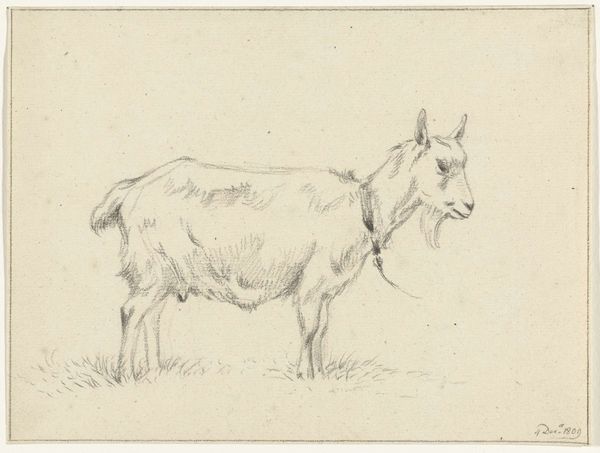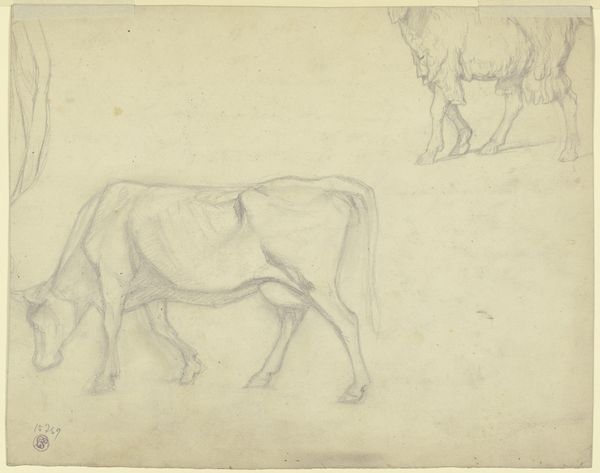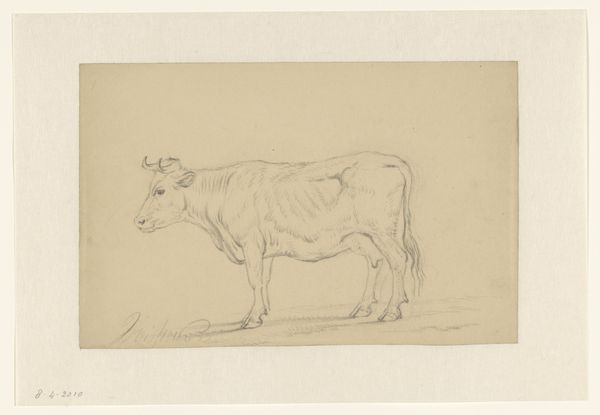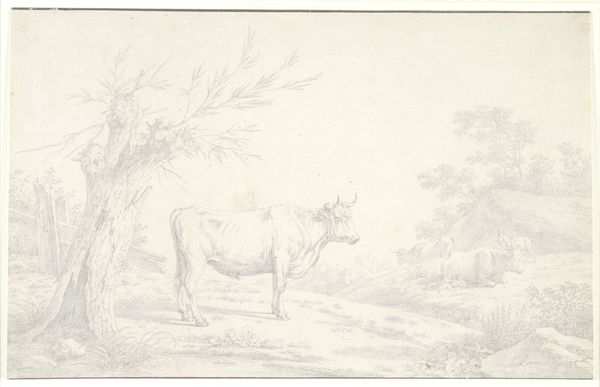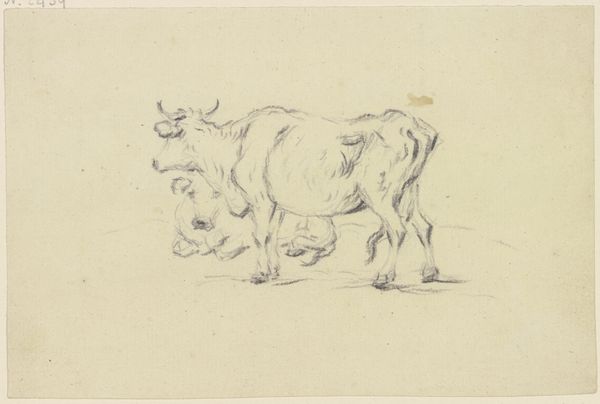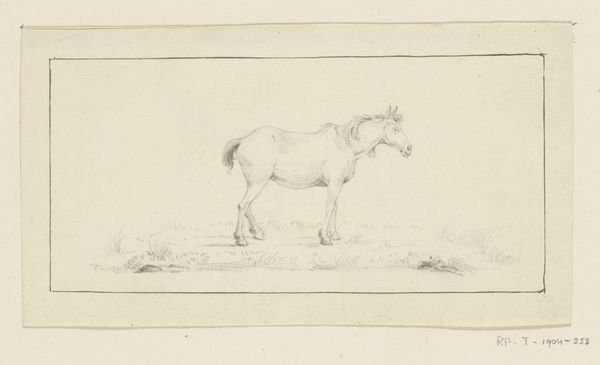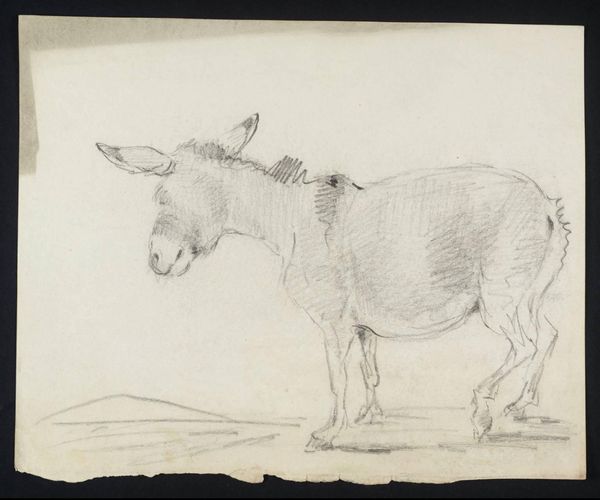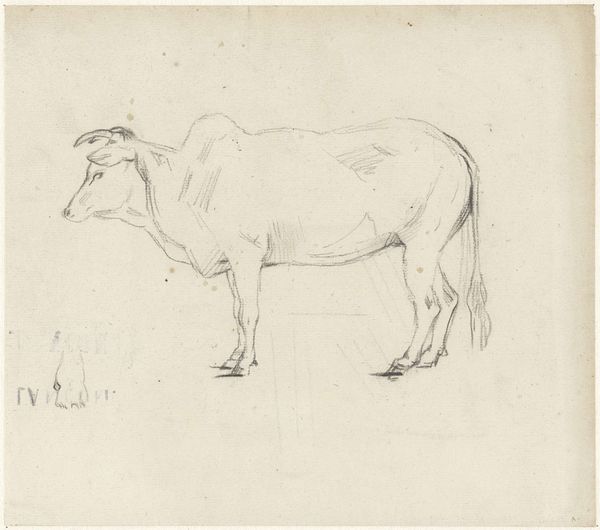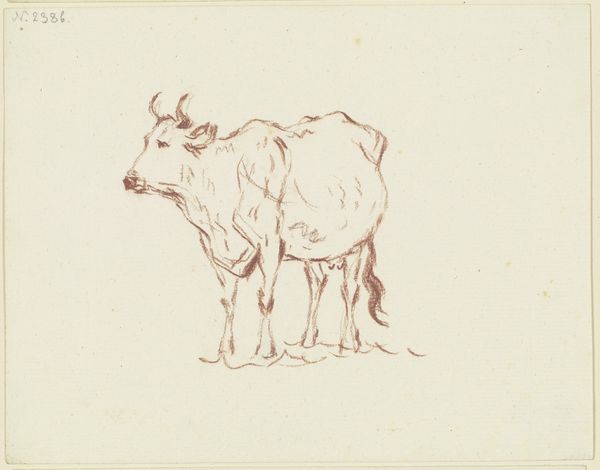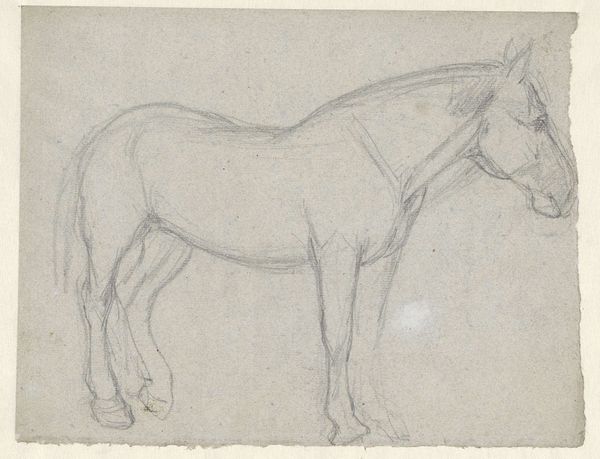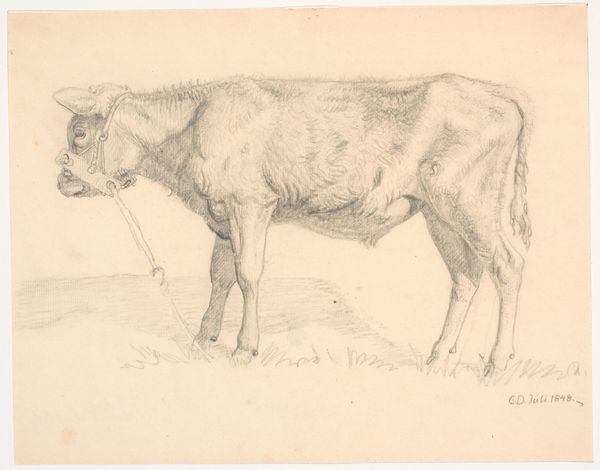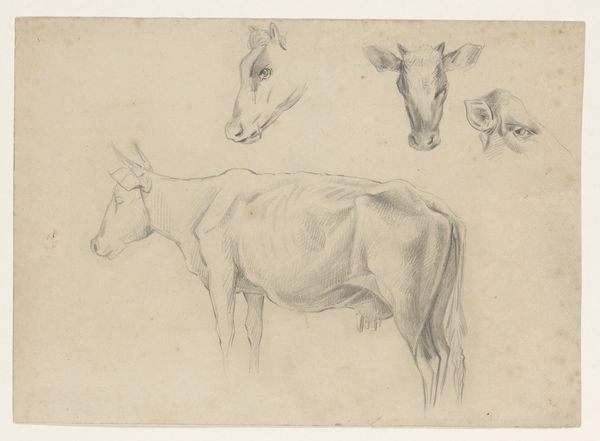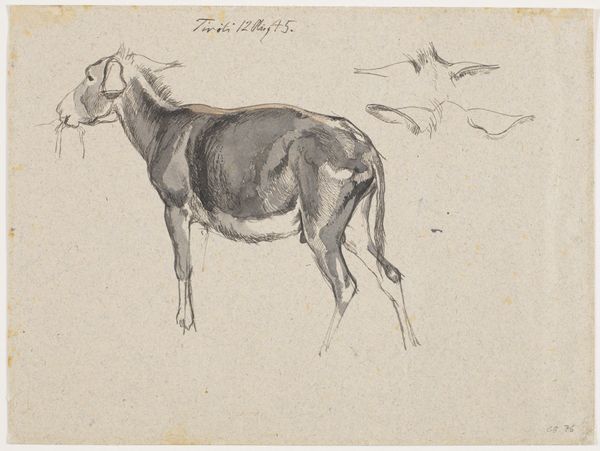
drawing, pencil
#
drawing
#
pencil sketch
#
landscape
#
figuration
#
pencil
#
realism
Dimensions: height 221 mm, width 266 mm
Copyright: Rijks Museum: Open Domain
Curator: This is Jan Mankes’ "Geit op een boomstam," or "Goat on a Log," a pencil drawing likely created between 1899 and 1920. Editor: It has a simple, almost understated beauty. The delicate pencil lines create a sense of quiet observation. Curator: Mankes' background certainly informs that observation. Coming from a humble, religious background, he lived a relatively secluded life, which is reflected in his choice of everyday subjects like this goat. There's a social dimension here, an unidealized portrait of rural life removed from artifice. Editor: I see the materiality so strongly – you can almost feel the texture of the paper and the graphite from the pencil. The process itself speaks to a dedication and simplicity; I imagine Mankes carefully rendering each line. No fuss, all quiet craft. Curator: Absolutely, and considering the art market of his time, the emphasis on humble subject matter deviates from the prevalent artistic trends which would likely portray more romantic and idyllic countrysides. Editor: Yes, Mankes seemed uninterested in elevating anything artificially. I keep focusing on how this feels so intimate. Not just the small scale, but that it is clearly a study. It’s about the act of seeing and recording. Curator: Indeed. His commitment to realism places this piece in an interesting position during a time of artistic transition and abstraction. Mankes had this clarity of vision, making something very powerful and accessible. Editor: For me, understanding the medium as a way into the message— how he built something of simple truth with such deliberately chosen materials. I wonder about his own labor while sketching. Curator: Mankes was known for this dedication. What stands out to me, when placing his art in its historical context, is how his humble subjects reflected both personal experience and his conscious artistic decisions. Editor: It all points back to seeing. Not just representing what’s visible, but revealing the subtle character embedded in this world. It feels almost revolutionary through understatement.
Comments
No comments
Be the first to comment and join the conversation on the ultimate creative platform.
